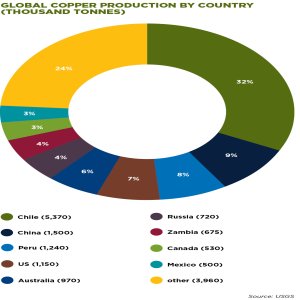Contribution of Commercial Banks to Mining Investment

STORY INLINE POST
The activities of the mining industry involve two aspects that make project financing crucial for its development: high risk and capital intensive projects. Mining activities, especially during the exploration stage, combine the intensive use of financial resources with high risk, and banks are reluctant to participate during this phase. However, they can support companies in an advisory role, enabling them to access financing. By being a Canadian- minded bank, Scotiabank has specialized engineers that can provide the needed expertise to deal with these kinds of activities. One of the most common mechanisms to raise funds for mining exploration activities are IPOs on the Toronto Stock Exchange (TSX). “The idea of taking companies public is that they can obtain enough resources to start exploration activities,” says Carlos Díaz de la Garza, Managing Director of Corporate Banking and Head of Global Loan Syndications Mexico at Scotiabank Global Business and Markets.
Changes to the Mexican legislation resulted in the opening of the Mexican economy and faster growth of the mining industry. “Before this change, the law did not allow companies to have more than 40% foreign ownership, nor did it allow them to have foreign representatives on their boards. Since 1992, changes in the legal framework fostered foreign investment in the mining industry,” explains Díaz de la Garza. “As a result, Canadians began investing in Mexico due to their experience and expertise in mining activities. There are currently about 240 Canadian companies carrying out more than 850 exploration projects in Mexico.”
One of the main challenges in the mining industry is moving from exploration to production given the large investment involved in building a mine. Canadian companies also often fund these projects by floating companies on the TSX. “Mexico needs to promote a different mining so that Mexicans are aware of the various options to start investing in mining,” Díaz de la Garza emphasizes. “Banks are ready to lend money once a mining company has started production,” Díaz de la Garza highlights. “In Mexico we lack seed capital to take projects to the next level.” The Mexican mining industry can obtain credit from the Government Trust for Mining Development (FIFOMI) but this credit institution has a limit of US$5 million. Gaining access to capital is easier in Canada or the US since as a result of their financial culture these countries have developed a better understanding of the risks associated with the mining industry. Mexico is being explored and offers big opportunities for seed capital but this process takes time and infrastructure must be created. The main challenge for the mining industry in terms of bankability and financing is obtaining financing for exploration in Mexico. Complying with very stringent credit standards that some banks are working with in the industry is another issue. The NI 43-101, a Canadian guideline to disclose information about mineral projects, is followed by companies to report proven and probable reserves but it is not a common practice in Mexico. “It costs a lot of money to follow this protocol and the majority of Mexican miners do not want to invest in it. If mining companies do not disclose their information in this particular way, it is impossible for any Canadian banking institution to lend them money,” Díaz de la Garza remarks. “This implies that companies immediately preclude banks like Scotiabank, Bank of Montreal, Toronto Dominion, Export Development Canada, and other of our Canadian competitors.”
The Mexican mining industry needs to understand that banks require proven and probable reserves to be included in their financial statements in order to become eligible for financing. In order to verify the existence of the mentioned reserves, Scotiabank has a team of engineers who visit the mines and certify that those reserves are in place. “Their problem is how to get the capital to jump from having a claim, to finding the resource, and to starting production activities,” Díaz de la Garza explains. “This step involves an investment of at least US$30 million in the best case scenarios, but the required investment to start production frequently is between US$50 to US$80 million.”
“Potential investors need to understand that there is an inherent risk in mining activities, but that this risk is manageable and can be mitigated,” Díaz de la Garza points out. “It is one of the banks’ responsibilities to promote this understanding. If one mining company successfully completes an IPO in Mexico it would be demonstrated that the stock exchange can be a viable option to obtain funding. When comparing the Mexican market to others, it is easier to find funding in mining-oriented countries such as Canada, Australia, and the US. This may be one of the reasons of why so many exploration sites belong to Canadian companies.” With the development of many mining projects in the coming years, banks such as Scotiabank want to be industry leaders in the mining sector by offering their financial products, expertise, and knowledge to clients. “We have a shared responsibility along with investors, the Federal Government, the banking industry, and other players to promote investments in the sector. We all benefit from a stronger mining industry,” he concludes.





















